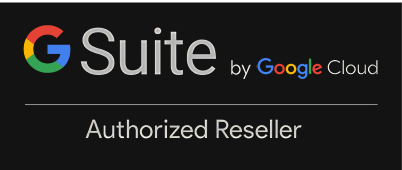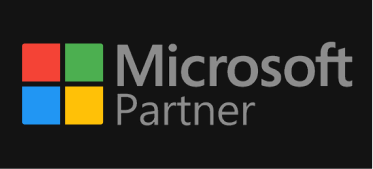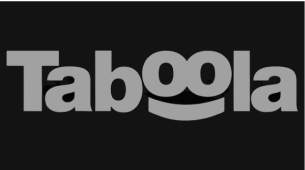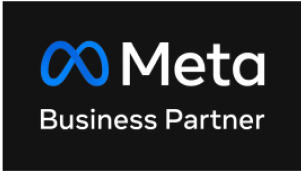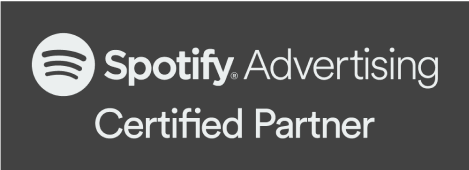
Website Cybersecurity Essentials: How Safe Are You?
This just in: Your data may be at risk, and you might not even know it. As October marks Cybersecurity Awareness Month 2025, experts from the National Cybersecurity Alliance and CISA are sounding the alarm. The theme this year? ‘Secure Our World.’ But before you shrug it off as just another tech headline, remember, website cybersecurity isn’t just about big corporations and government agencies. If you own a website, manage one, or even just share your details online, you are already in the firing line.
Hackers aren’t picky, and every click, form, and password field is a potential target. One weak spot is all it takes for cybercriminals to slip in, lock you out, or leak sensitive data, often before you even realise something’s wrong. Keep reading, because what you learn next could be the difference between a close call and a full-scale digital disaster.
What’s Inside:
- Why Website Cybersecurity Matters?
- Key Threats to Website Security
- How to Check if Your Website is Vulnerable?
- Cybersecurity for Businesses: Must-Do Measures for 2025
- Invest in Secure Website Hosting
Why Website Cybersecurity Matters?
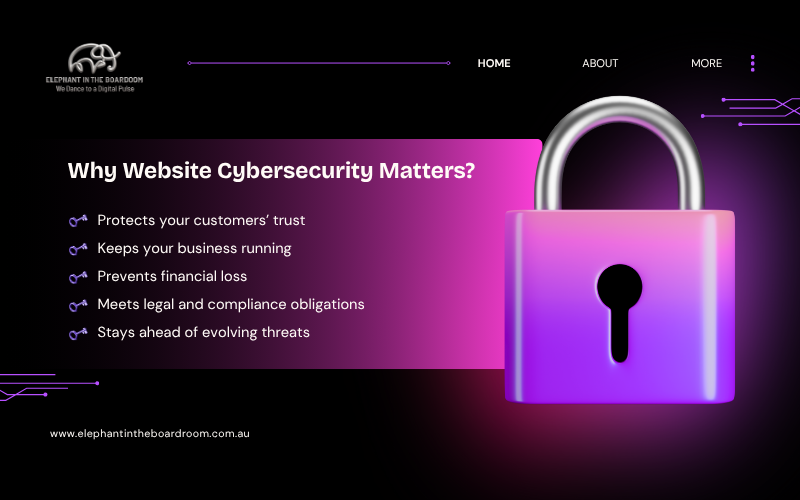
In 2025, cyber threats are faster, smarter, and harder to spot, and your website is often the first target. Here’s why keeping it secure should be top of your priority list:
Protects Your Customers’ Trust
A single data breach can damage your reputation overnight. Strong security safeguards personal details so your customers feel confident doing business with you.
Keeps Your Business Running
Cyberattacks can take your website offline for hours or even days. A secure setup reduces downtime and keeps your operations moving without costly interruptions.
Prevents Financial Loss
From stolen transactions to ransom demands, cyber incidents can be expensive to fix. Investing in security now is far cheaper than dealing with the fallout later.
Meets Legal and Compliance Obligations
Privacy and data protection laws in Australia are tightening. Staying compliant not only avoids penalties but also shows you value responsible business practices.
Stays Ahead of Evolving Threats
Hackers are constantly finding new ways in. Regular updates, monitoring, and proactive measures keep you one step ahead.
Key Threats to Website Security
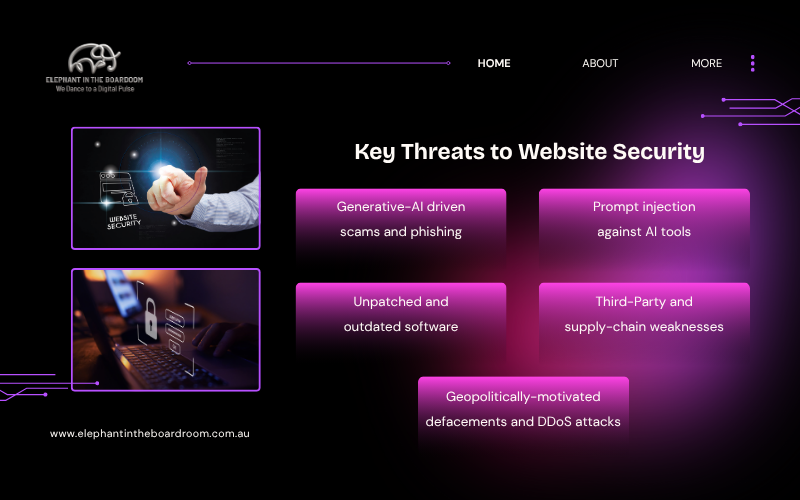
When it comes to website cybersecurity, the threats aren’t always lurking in dark corners; some are knocking right at your digital front door. From cunning scams powered by AI to exploits hiding in outdated plugins, attackers are constantly finding new ways to slip past your defences.
Here are some threats to your website security:
Generative-AI Driven Scams and Phishing
Cybercriminals are using rogue AI tools like GhostGPT to craft highly convincing phishing emails, spoofed portals and polymorphic malware, even with minimal skill required. This dramatically lowers the barrier for creating sophisticated attacks.
Prompt Injection Against AI Tools
Malicious instructions embedded in web pages or documents can trick AI systems, like summarisation tools, into performing unintended actions. Prompt injection is listed as a top risk in OWASP’s 2025 report for AI-powered apps.
Unpatched and Outdated Software
A telling 2025 study shows 32% of cyberattacks exploit known but unpatched vulnerabilities, highlighting the critical importance of timely updates.
Third-Party and Supply-Chain Weaknesses
The Qantas data breach stemmed from a third‑party helpdesk platform, underlining how vulnerabilities outside your immediate control can expose personal data.
Geopolitically-Motivated Defacements and DDoS Attacks
CyberCX raised Australia’s threat level to “moderate” due to attacks from pro‑Russian and pro‑Iranian actors, especially affecting SMEs. These include website defacements, DDoS disruptions, and hack‑and‑leak operations targeting schools, taxi services and retailers.
How to Check if Your Website is Vulnerable?
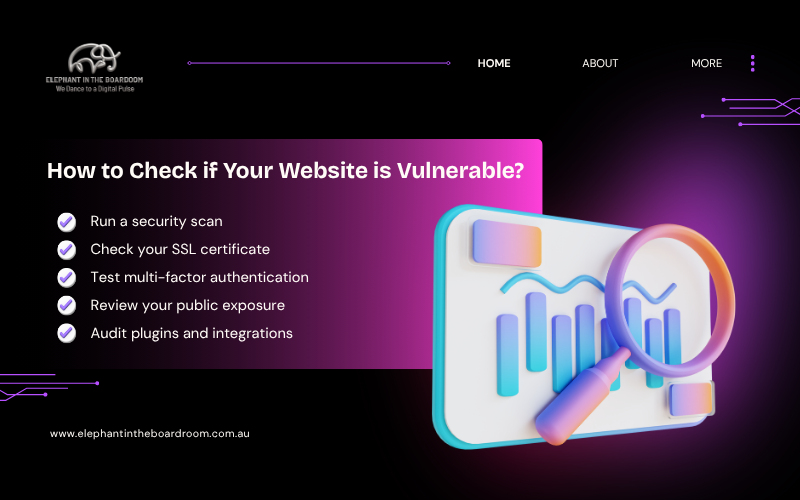
Your website might look sleek on the outside, but behind the scenes, cracks in its defences can leave it wide open to threats. Website cybersecurity isn’t just about keeping the bad guys out; it is about making sure every lock, gate, and guard is doing its job.
Here’s how you can check your website for vulnerabilities:
Run a Security Scan
Use a reputable vulnerability scanner to flag outdated software, weak passwords, and known exploits. These scans give you a snapshot of your current security posture and highlight urgent fixes.
Check Your SSL Certificate
Open your site in a browser and confirm the HTTPS padlock is present and valid. If it is missing or misconfigured, sensitive data could be exposed in transit. Fix it immediately.
Test Multi-Factor Authentication
If your CMS, hosting, or admin portals allow logins without MFA, you have found a major weakness. Enable and test MFA for all admin accounts.
Review Your Public Exposure
Search your business name, domain, and key staff online. Look for exposed login portals, staff directories, or sensitive data that could be leveraged in an attack.
Audit Plugins and Integrations
Outdated, unused, or poorly coded plugins are prime breach points. Remove what you don’t need and update the rest to the latest versions.
Cybersecurity for Businesses: Must-Do Measures for 2025
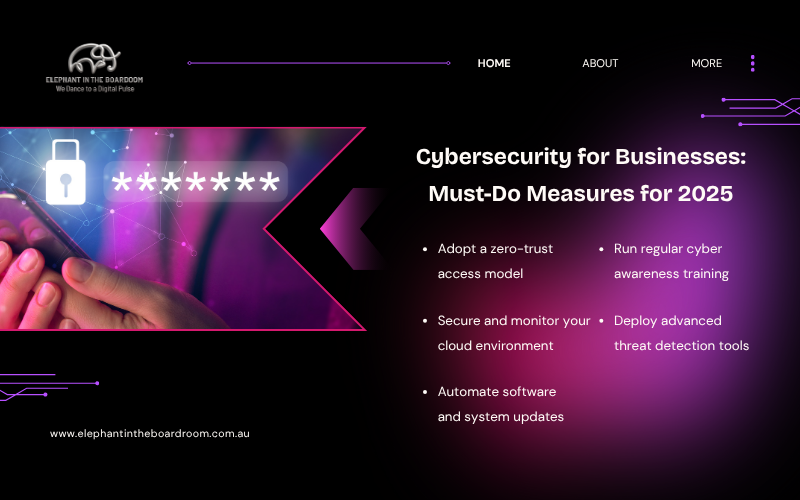
Website cybersecurity might not be the flashiest part of your business, but it is the one thing you will be thankful for when trouble comes knocking. The following are some must-do moves you can kick off today:
Adopt a Zero-Trust Access Model
Assume nothing and verify everything. Every login, device, and application request should be authenticated and continuously monitored to limit potential damage.
Secure and Monitor Your Cloud Environment
Regularly audit cloud storage permissions, enable encryption by default, and monitor access logs to catch misconfigurations before they are exploited.
Automate Software and System Updates
Implement automated patching for operating systems, applications, and server software so vulnerabilities are closed as soon as fixes are available.
Run Regular Cyber Awareness Training
Your staff are either your strongest defence or your weakest link. Regular training helps them recognise phishing, handle data safely, and avoid risky behaviours.
Deploy Advanced Threat Detection Tools
Go beyond basic antivirus. Use AI-driven monitoring that detects unusual activity in real time, flags potential breaches, and triggers rapid responses.
Invest in Secure Website Hosting
If your website's cybersecurity isn’t getting a clean bill of health, it is time to bring in the specialists. At Elephant in the Boardroom, we don’t just patch holes, we dig deep, fortify your digital defences, and keep watch so threats don’t slip through the cracks.
Don’t wait for the alarms to start blaring. Your next step towards an airtight website cybersecurity starts with us. Reach out to Elephant in the Boardroom today, and let’s lock down your site before the bad guys even get a look in. Because when it comes to protecting your business online, we believe prevention is always better than panic.













